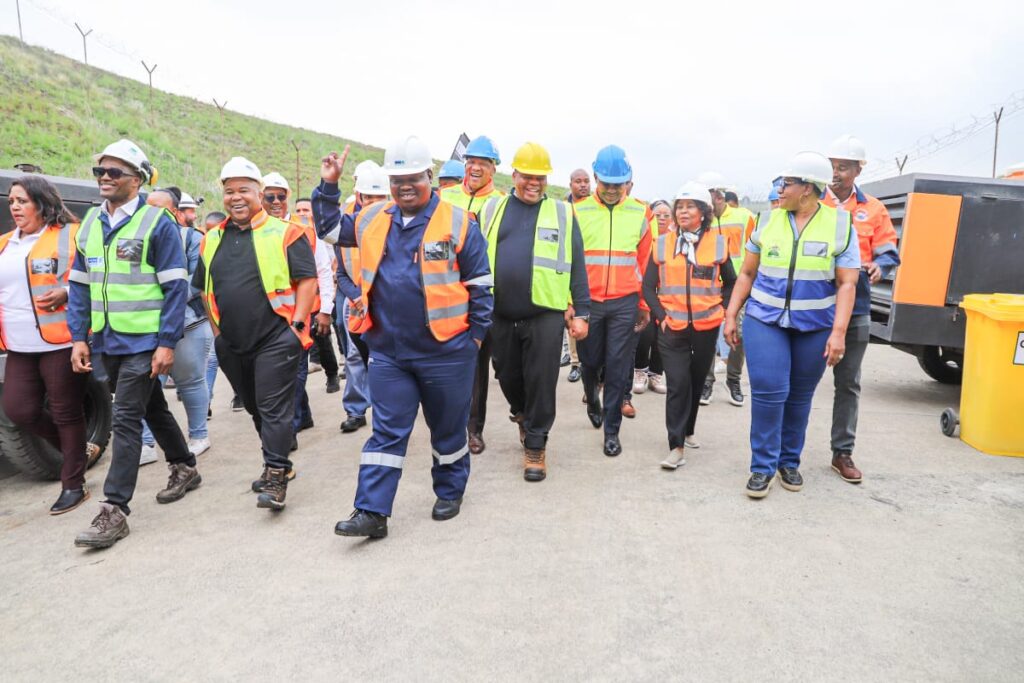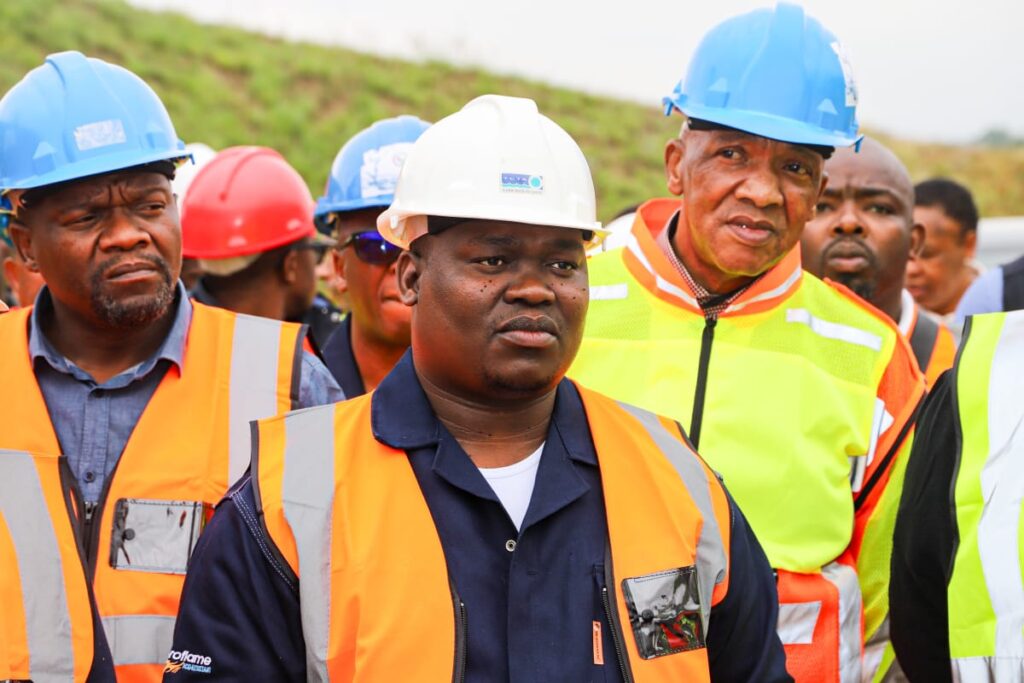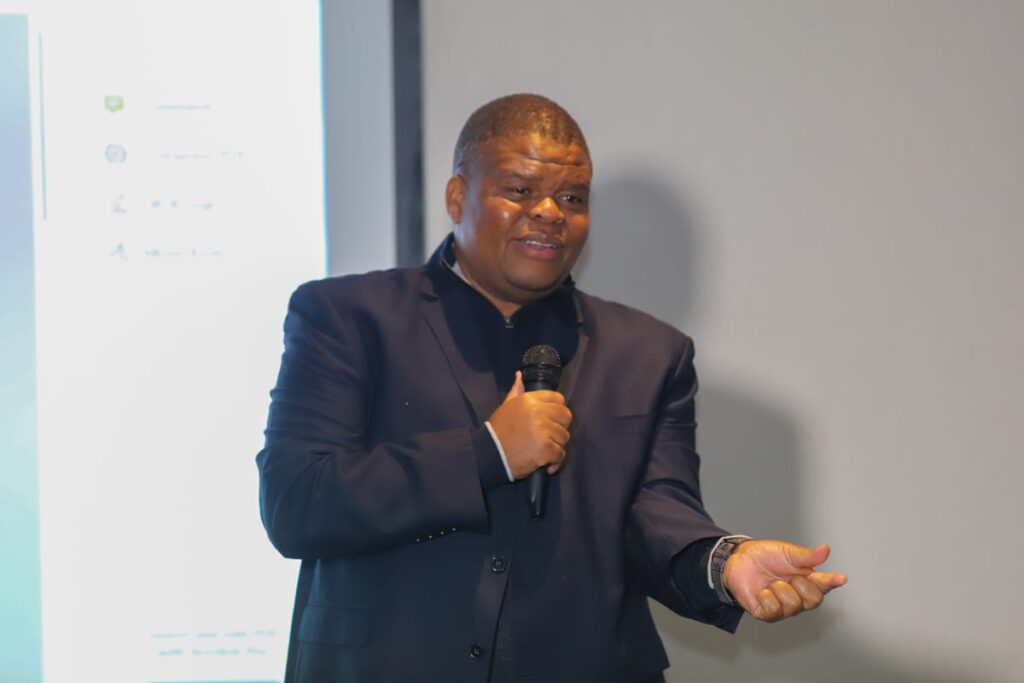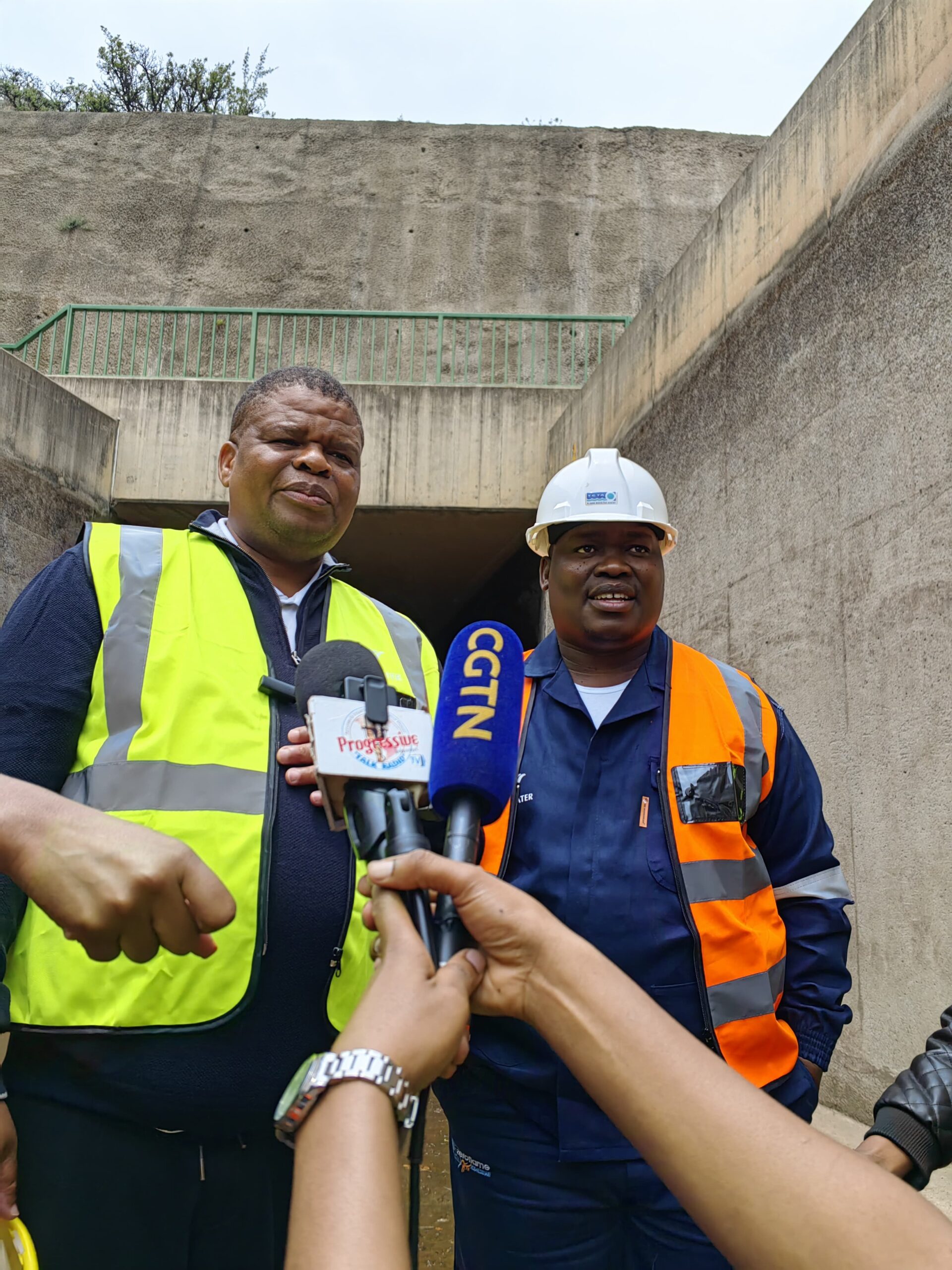Nomazulu Moyo
CLARENS, South Africa – The Southern African Development Community (SADC) region is facing significant challenges in water management. With increasing demand, diminishing resources, and deteriorating infrastructure, cooperation between member states is more vital than ever.
Nowhere is this collaboration more evident than in the ongoing maintenance operations of a Lesotho Highlands Water Project (LHWP) pipeline from Lesotho to South Africa, a critical initiative for sustainable water supply. This article examines the efforts, progress, and challenges surrounding this monumental project, quoting key stakeholders to highlight its importance.
“Water knows no boundaries”

“Water knows no boundaries. It knows no ideology,” said Deputy Minister of Water and Sanitation, David Mahlobo during a Friday visit to Clarens, in the Free State province. The words encapsulate the essence of the SADC region’s approach to water management. The LHWP, a transboundary water-sharing initiative between Lesotho and South Africa, underscores this philosophy. Through a network of tunnels, water from Lesotho is transferred to South Africa, benefiting not just these two nations but also neighbouring countries such as Botswana and Namibia.
The project demonstrates the shared responsibility and cooperation necessary to manage the region’s scarce water resources. As Mahlobo noted, “This cooperation between the two countries is the way to go”.
Current status of the LHWP maintenance
Maintenance on the LHWP tunnel system, a critical component of the project, began on 1 October 2024, and is scheduled for completion by 31 March 2025. The operation, carried out by the Trans-Caledon Tunnel Authority (TCTA) on the South African side and the Lesotho Highlands Development Authority (LHDA) in Lesotho, ensures the integrity of the water tunnel system.

The periodic maintenance, conducted every five years, is essential to prevent system failures. However, this shutdown has resulted in a temporary shortfall of 80 million cubic metres of water. Despite this, Mahlobo reassured the public, stating, “The system remains stable, but citizens must still use water sparingly”.
A collaborative effort
Precious Sibiya, chairperson of the TCTA board, emphasised the importance of the partnership, stating, “As the TCTA, we work very closely with our counterparts on the Lesotho side to ensure these projects are executed timely and within budget”. This collaborative effort is critical to maintaining the region’s water supply and ensuring communities receive the resources they need.
Efforts include relief interventions by the Department of Water and Sanitation, such as upgrading water treatment works, drilling boreholes, and constructing new reservoirs. These initiatives aim to mitigate the impact of the tunnel shutdown on affected communities.
Challenges in the Free State
The Free State, a province heavily reliant on water from the LHWP, has faced additional hurdles. Municipalities like Mafube, Dihlabeng, and Nketoana have struggled due to weak infrastructure and financial strain. Seiso Mohai, Deputy Minister for Performance Monitoring and Evaluation, issued a stern warning, saying, “This should be a wake-up call to municipalities”.
“We must have no fear or favor in addressing illegal water connections and infrastructure sabotage.”
More from Africa News 24
Municipalities are losing billions of litres of water to illegal connections, leaks, and inefficient systems. According to Seitlholo, “Of the billions of litres of water provided to Gauteng, 2.5 billion litres are lost daily. This is unsustainable for a water-scarce country.”

Sustainability and accountability
The LHWP is not just about transferring water—it’s a commitment to sustainability and accountability. As Mahlobo stated, “Maintaining assets like this ensures they remain operational for decades, even if it causes temporary inconvenience.”
With proper maintenance, the LHWP is projected to remain functional for at least another 20 years, providing reliable water to millions.
However, sustainability requires not just infrastructure but responsible usage. Communities must embrace water-saving practices, such as fixing leaks, avoiding illegal connections, and regulating irrigation.
“We cannot allow people to vandalize infrastructure or misuse water,” Mahlobo added.
A call to action
The maintenance shutdown has highlighted the urgent need for better management of wastewater and pollution. Currently, municipalities discharge 160 million litres of raw sewage daily into the Vaal River system. This pollution negates the benefits of clean water supplied by the LHWP.
“We need to address the collapse of wastewater treatment works across municipalities. Without functional systems, we cannot achieve sustainable water management,” Sibiya said.
Progress amid challenges

Despite these challenges, progress is being made. The construction of Polihali Dam under the second phase of the LHWP is on track, further securing water supply for the future.
“We are proud to be the implementing agent of the Department of Water and Sanitation. Our teams are committed to executing these projects on time and within budget,” Sibiya said.
Conclusion
The SADC region’s approach to water management, exemplified by the LHWP, reflects the importance of unity and shared responsibility. While challenges persist, the commitment of stakeholders—from local municipalities to regional governments—offers hope.
“Water is life,” said Sibiya adding that protecting it was a shared duty.
As the LHWP continues to evolve, it serves as a reminder that collaboration, accountability, and sustainability are the keys to securing the region’s future. For the people of South Africa and beyond, this project is more than an engineering feat—it’s a lifeline.












